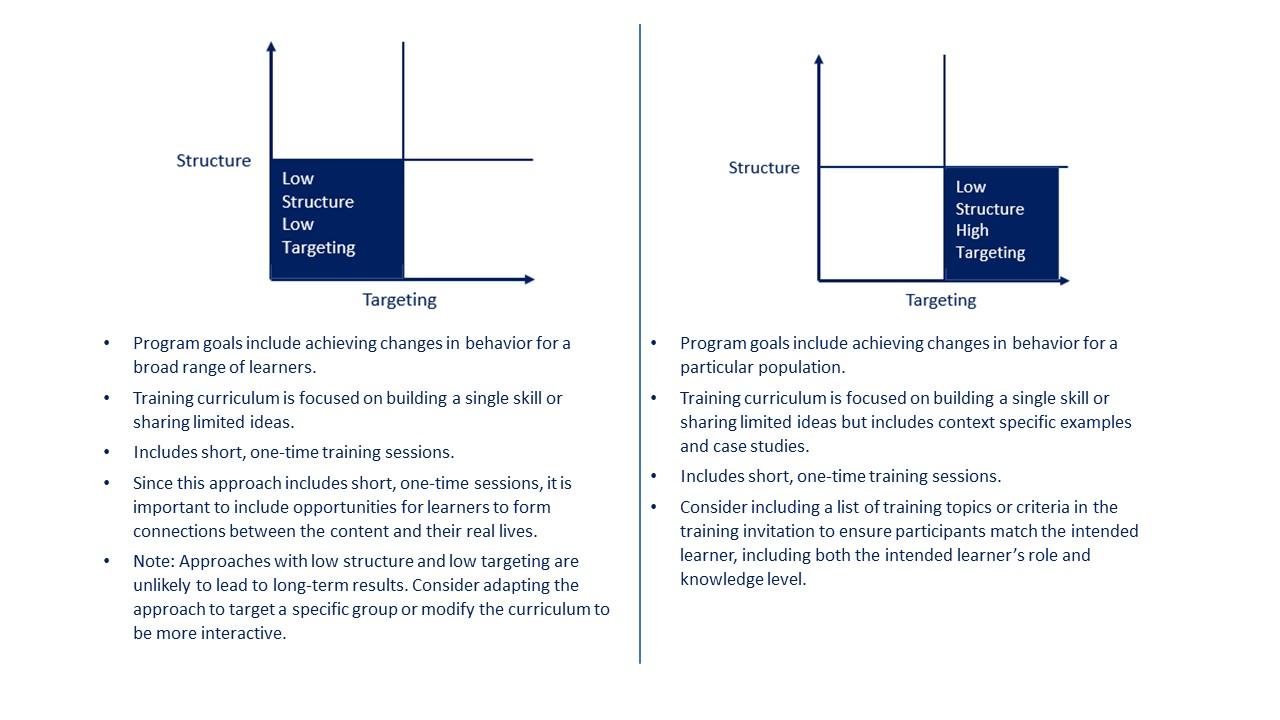Designing Training for Greater Impact: Adapting Best Practices for DRG Practitioners
In the democracy, human rights, and governance (DRG) space, we spend a lot of time and effort training local partners to ensure they have the skills and knowledge to enact positive, sustainable change to increase democratic outcomes. While DRG agencies inventory commonly used approaches and metrics, they rarely complete rigorous evaluations to determine what works and what doesn’t. The limited evidence available suggests the reason training interventions fail to achieve impact is because they are often not designed to incorporate lessons on adult learning best practices. We can do better.
At the International Republican Institute (IRI), we have conducted research on adult learning best practices and how they can be marshalled in our programs to help drive positive behavior change. Using this research, we have developed tools to help DRG practitioners incorporate best practices into the design and evaluation of training interventions. One of these tools is a 2x2 rubric that categorizes knowledge dissemination approaches on two key variables: targeting and structure.
The Rubric
We capture the degree to which a training follows adult learning best practices using continua, as shown below.


From here, the training is mapped onto the 2x2 grid. This grid enables us to visualize the intersection of targeting and structure and outlines key considerations for practitioners to use, including different levels of targeting and structure. While this tool can be used to ensure training approaches align with best practices, practitioners can also use it to outline strategic or operational decision points that might impact their decision to follow or not follow adult learning best practices. For example, a team may choose to have an open call invitation for a training (low targeting) because they have limited contacts or want to gain new contacts among a certain population. While this may not follow adult learning best practices, it can be a valuable approach to meet a separate need or goal. Below we outline considerations for each combination of the training components and discuss the context when each might be ideal.


No one quadrant is best, and each comes with a set of tradeoffs. For instance, teams might want to target political party members for a training on constituent outreach but have little control over who party leaders decide to send. In this case, including a training description in the invitation that party leaders can use to guide their decision could help ensure those participants match the intended learner profile. Otherwise, teams may want to design more generalized training materials to meet the needs of a broader range of learners.
When designing and implementing training, teams can use the questions below to begin to determine which combination might be best for their program.
- Do you want to attract a wide range of participants or a select role or profile?
- Can you select participants?
- Is the intended behavior change easy to implement or will it take time to develop?
- Can you assess participants’ knowledge level prior to the training?
Evaluators can also use this tool to investigate the link between knowledge dissemination efforts and long-term behavior changes more effectively. The rubric can be used to categorize training approaches, identify which (if any) evidence-based practices are followed, and investigate if/how/which approach achieves desired results.
We have started using this tool in an on-going evaluation series and have found it reinforces several promising practices implementers are already using to improve training approaches. Be on the lookout for additional guidance and tools based on our upcoming work in this evaluation series!



